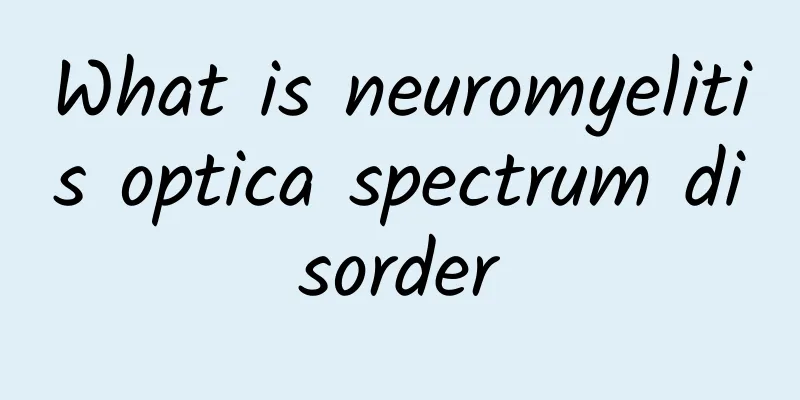What is neuromyelitis optica spectrum disorder

|
Neuromyelitis optica spectrum disorder is a common symptom of myelitis optica, which is quite harmful to patients and requires timely and regular treatment. Optic neuritis often presents with recurrent optic neuritis or bilateral optic neuritis at the same time. The pathogenesis of this disease is not particularly clear at present, but it is closely related to the viral reaction of proteins in the optic nerve. (1) 2010 EFNS NMOSDs ① Types with limited affected areas, such as long segment transverse myelitis (LETM), recurrent isolated optic neuritis (RION) and bilateral optic neuritis (BON). ② NMO occurs in the context of organ-specific or non-organ-specific autoimmune disease. ③Atypical cases with symptomatic or asymptomatic brain lesions. ④Optic-spinal MS (OSMS) in Asian countries. (2) 2007 Wingerchuk NMOSDs ① NMO. ② The lesions are limited to the optic nerve and spinal cord. a) Idiopathic monophasic or recurrent long-segment transverse myelitis (MRI lesions ≥ 3 vertebral segments). b) Optic neuritis: recurrent optic neuritis or simultaneous bilateral optic neuritis. ③Asian type of optomedullary multiple sclerosis (OSMS). ④Optic neuritis or long segment transverse myelitis combined with autoimmune disease. ⑤ Optic neuritis or myelitis combined with intracranial lesions with NMO characteristics (hypothalamus, corpus callosum, periventricular and brainstem). A study showed that 55% of patients with transverse myelitis NMO-IgG positive had relapses of myelitis or developed NMO within 1 year. Etiology and pathogenesis The cause is unknown. AQP4 is the main water channel protein in the central nervous system and is located on the foot processes of astrocytes. AQP4 is the main target of NMO-IgG, which explains why the lesions of NMO are mainly located in the optic nerve and spinal cord. AQP4 antibodies enter the central nervous system through the permeable part of the blood-brain barrier, immediately encounter astrocytes and cause a cell-dependent cytotoxic reaction. The foot processes of astrocytes are degraded by NMO-IgG and complement, and then activated macrophages, eosinophils and neutrophils produce cytokines, oxygen free radicals, etc., causing vascular and parenchymal damage, ultimately leading to damage to white matter and gray matter including axons and oligodendrocytes. Familial NMO cases are rare, accounting for less than 3% of all diagnosed NMO cases. Human leukocyte antigen DPB1*0501 (Asian population) and DRB1*0301 (Caucasian population) are associated with NMO susceptibility. This indicates that genetic factors play a certain role in the onset of NMO. |
<<: Is axillary lymph node tuberculosis easy to treat?
>>: Can Melatonin improve sleep?
Recommend
What causes frequent colds?
With the changes in one's physical constituti...
Why do I wake up at night and can't fall asleep?
If a person's sleep quality is poor for a lon...
What is bladder diverticulum?
Bladder diverticulum refers to a sac where the bl...
Anti-inflammatory drugs for simple appendicitis
There is a part in people's stomach called th...
What medicine can cure dizziness quickly?
I believe many people have experienced symptoms o...
Symptoms of dryness
Zang-zao syndrome is actually irritable bowel syn...
The efficacy and function of golden-edged earthworm
Earthworm, also known as earthworm, earthworm, et...
What are the clinical symptoms of myeloma?
The emergence of myeloma is actually accompanied ...
Astragalus causes hepatotoxicity
The hepatotoxicity caused by Astragalus may weake...
Can I get pregnant after having sex after the IUD is removed?
Many people go to the hospital to get an IUD inse...
How to deal with low self-esteem due to hair loss
Through understanding the causes of hair loss, se...
What causes pituitary gland enlargement?
The pituitary gland is an important part of our b...
Why is it itchy down there when I have my period?
Vulvar itching is a disturbing thing. Vaginal itc...
What to do if your triglyceride level is high
High levels of triglycerides are very harmful to ...
Why does corn cause milk to return?
Many people often hear the older generation say t...









